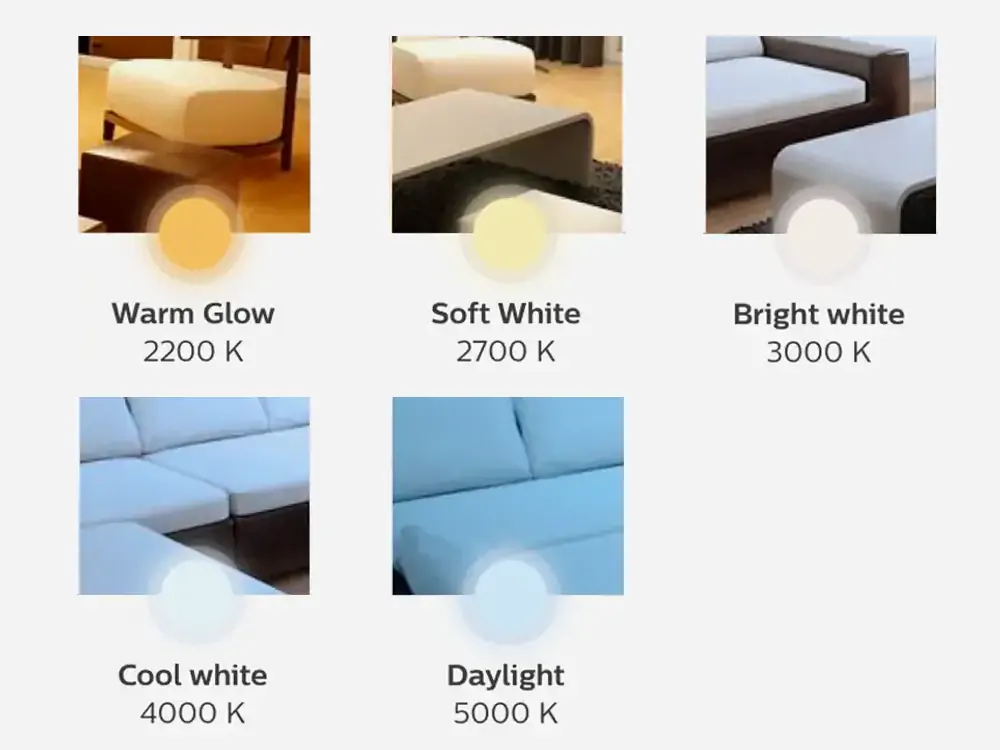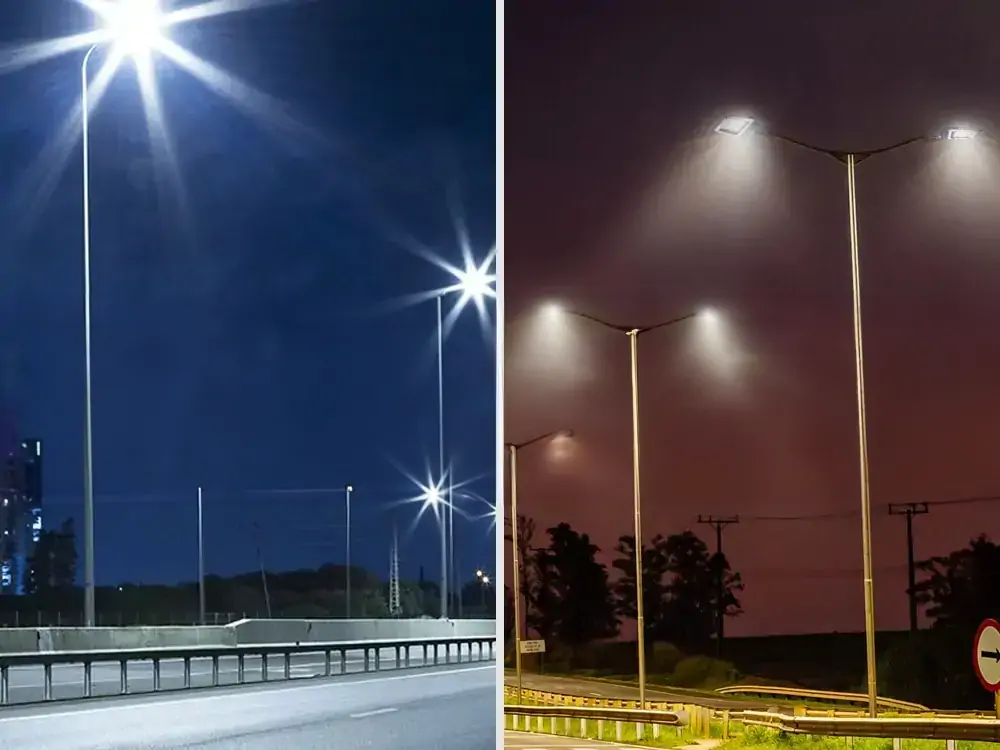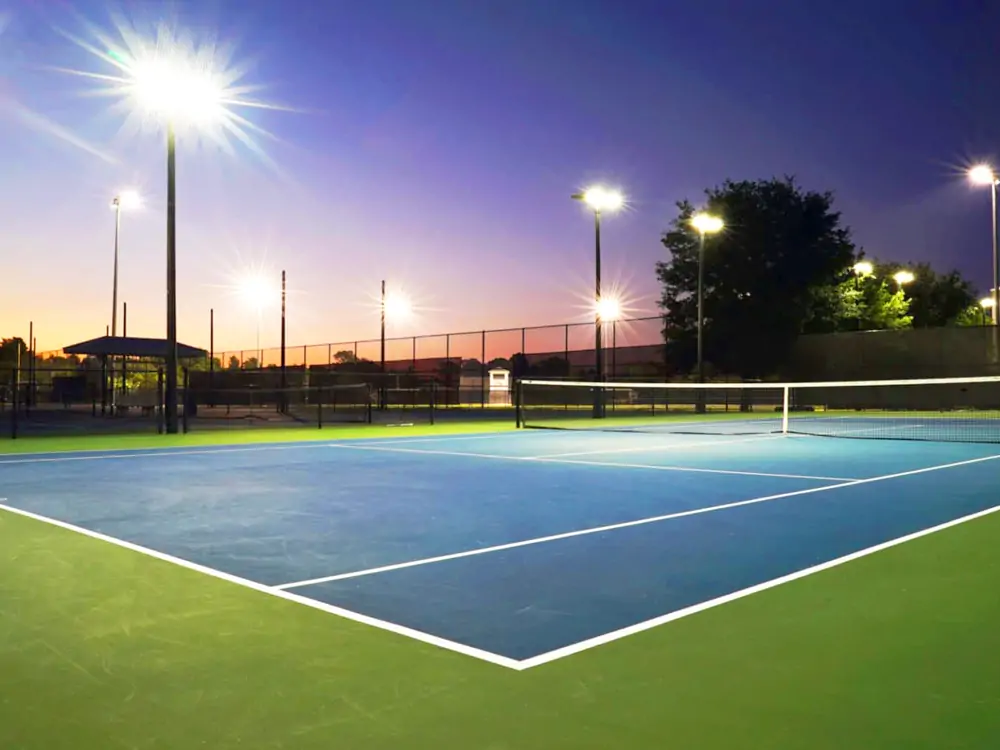Correct lighting plays a vital role in keeping our surroundings bright and safe. Light increases functionality and brings clarity and warmth to our spaces. Thanks to the innovation of the light bulb, we can continue performing our various activities even after dark. But not all that glitters or shines is free from issues. Many people face difficulties in their attempts to find the perfect light bulb. The most common problem is choosing a color temperature that suits their preferences. Among these temperatures, cool white VS daylight bulbs are popular options. However, their subtle differences can heavily impact the environment atmosphere.
An Overview of Color Temperature
Before we explore the difference between cool white and daylight bulbs, you should know a bit about color temperature.
Color temperature describes the hue of visible light. It is measured in Kelvins (K) and ranges from warm to neutral and cool tones.

- Warm white tones (2000K to 3000K): emit a soft, yellowish light like one from a candle.
- Cool white tones (4000K to 5000K): emit a bright, clean white light with a brief touch of blue. This type of light is perfect for areas that prioritize visibility. Such as in kitchens, bathrooms, workspaces, and supermarkets.
- Daylight tones (5000K to 6000K): this hue mimics natural daylight. It produces a bright, blue-white light akin to the light of the sun or moon.
When comparing daylight VS cool white bulbs, users often describe the former as refreshing and the latter bulb as intense. In that sense, daylight bulbs are more suited to places that desire natural light. A few good examples include libraries, classrooms, and art studios.
Which Is Brighter, Cool White or Daylight?
Well, first things first. A light bulb’s Kelvin temperature does not determine its brightness. Instead, brightness is measured in lumens.
Lumen ratings measure the brightness of a light source. To determine “which is brighter, cool white or daylight,” you’d need to check the lumen ratings of different bulbs.
Which would you think is brighter, a cool white bulb of 1100 lumens or a daylight bulb with 1600 lumens? Yes, it’s the daylight bulb. The higher the lumen rating of a bulb, the brighter the light it emits. So, the next time you wonder about the difference between daylight and cool white bulbs, check its lumen rating.
Remember, the higher the lumen rating, the brighter the bulb. In addition, the higher the kelvin temperature, the whiter the light.
Comparing Cool White VS Daylight Bulbs
In this section, we compare daylight VS cool white bulbs using their characteristics. This segment explains what sets these two bulbs apart so that you have no trouble identifying which is which.
1. Appearance
After switching on a bulb, the first difference you notice between cool white VS daylight bulbs is their outlook.
A cool white bulb appears bright, intense, and clean. Light bulbs with this color temperature have neutral white colors with the briefest touch of blue. This trait makes them perfect for sensitive applications that focus on visibility.
Alternatively, a daylight bulb has a bluish-white hue that resembles natural daylight. Specifically, bright sunlight at noon. As a result, daylight bulbs create a more comfortable viewing environment and reduce eye strain.

2. Effect on eyesight
In general, light bulbs with warmer temperatures are better for the eyes. This is why many people may conclude that cool white lights are better for eyesight. But that isn’t the case.
Both “daylight VS cool white” bulbs have impacts on eye comfort. Daylight bulbs, for instance, offer natural sunlight stimulation that reduces eye strain. This mimicry gives users a more relaxed viewing experience that could improve mood and energy levels. A bit like how it feels to be under the sun.
However, the intense blue hue of daylight bulbs can get too much in many settings. An example would be continuous use in relaxation areas during evening time.
Cool white bulbs are a better option for evening use and light-sensitive individuals. They have less glare than daylight bulbs, making them more suitable for extensive use.
However, the bright light from cool white bulbs can get harsh and unpleasant as time passes. The result of this includes fatigue and eye strain for the user.
Neither daylight nor cool white bulbs are beneficial to the eyes during prolonged use. However, each bulb has certain features that counter its downsides. Hence, personal preference and your specific needs should influence your choice.
3. Effect on Mood
Light is an important factor in our mood and performance in different environments. A daylight bulb mimics the quality of natural light at noon. Taking a short walk or a break during the day is a common way to clear our minds and relieve stress. Since daylight bulbs produce light that resembles sunlight, exposure can cause a similar reaction.
When used during the day, daylight bulbs increase alertness and energy levels. They also help eliminate fatigue by creating a refreshing ambiance, which enhances mood and positivity. As a result, they are perfect for professional spaces like offices and classrooms.
Cool white bulbs provide a bright and clean light that energizes the user. They also increase focus and alertness but without the intensity of daylight bulbs. In addition, they enhance visibility and reduce eye strain caused by continuous use. In workspaces, cool white light creates a clean and tidy space that fosters a positive mindset. This helps to maintain productivity and prevent mental fatigue.
Applications of Cool White VS Daylight Bulbs
Choosing between cool white and daylight bulbs depends on your needs and the atmosphere you want to create. It also depends on the area or place you wish to install the light bulb.
Kitchen Use
Between the two, cool white bulbs are excellent for bathroom use. They provide bright lighting that allows you to see things in finer detail, which is great for grooming, shaving, and makeup application. Cool white lights make colors appear true to life. While daylight bulbs offer something similar, they may be too intense for bathroom activities. They are, however, great for applying makeup where accurate color representation is vital.
Bathroom Use
Between the two, cool white bulbs are excellent for bathroom use. They provide bright lighting that allows you to see things in finer detail, which is great for grooming, shaving, and makeup application. Cool white lights make colors appear true to life. While daylight bulbs offer something similar, they may be too intense for bathroom activities. They are, however, great for applying makeup where accurate color representation is vital.
In Sports Fields

Daylight bulbs are more suitable for sports fields. This is because they provide natural lighting conditions which are great for outdoor sports. Their bright, bluish-white light ensures exceptional visibility and colour accuracy. This makes them the best option for nighttime and daytime sports activities and events. Cool white lights can also be used in sports fields lighting. They provide bright and even lighting that is necessary for spectators and players. Cool white lights improve the viewing experience and ensure that the players can see the field.
Offices and Workspaces
Both daylight and cool light bulbs are used in office spaces. However, cool white light bulbs are preferred for offices and workplaces. They provide a balanced brightness that helps to reduce glare and improve contrast. Cool lights allow office staff to maintain focus and professionalism. They further help to improve productivity and keep employees alert during work hours.
Concluding Remarks
Choosing the right type of lighting is crucial. Your choice will influence your safety, performance, and atmosphere.
Cool white bulbs are generally more suitable for areas prioritizing clean light and excellent visibility. These areas include bathrooms, offices, sports fields, hospitals, and kitchens.
On the other hand, daylight bulbs are ideal for spaces that need natural light. These include peaceful areas like libraries, art rooms, and classrooms. We hope this article answers your questions about “cool white VS daylight bulbs.”